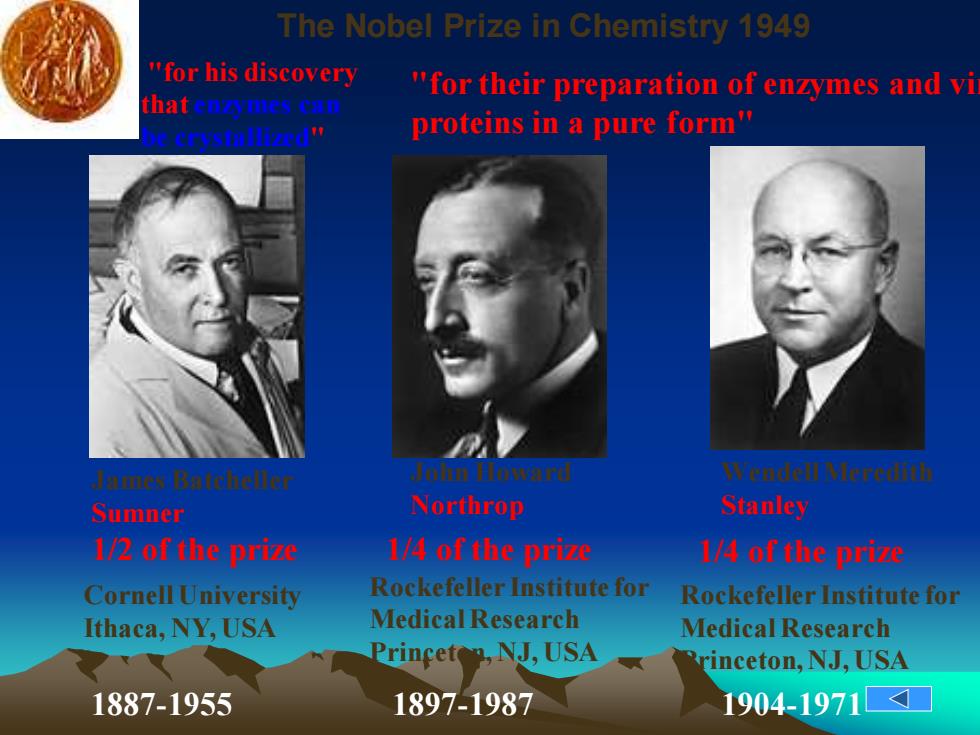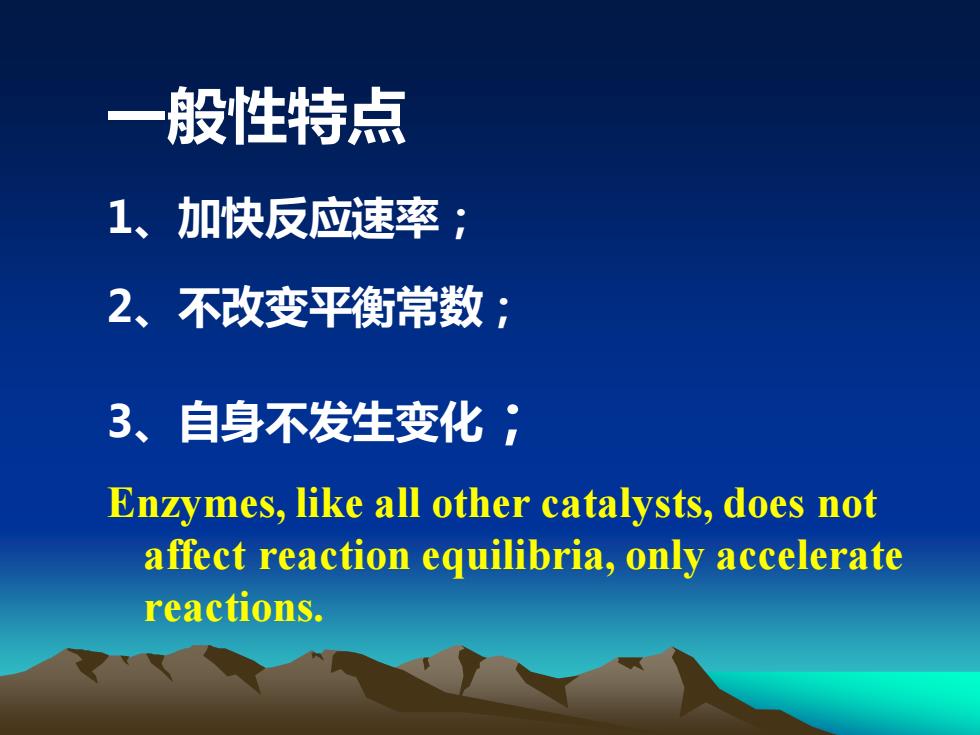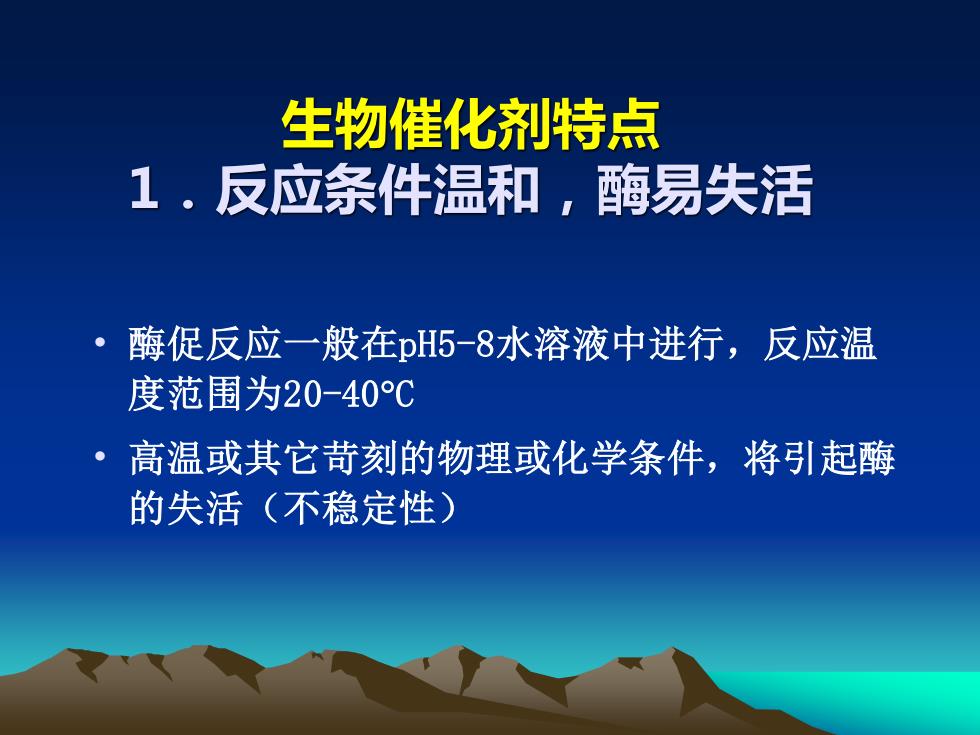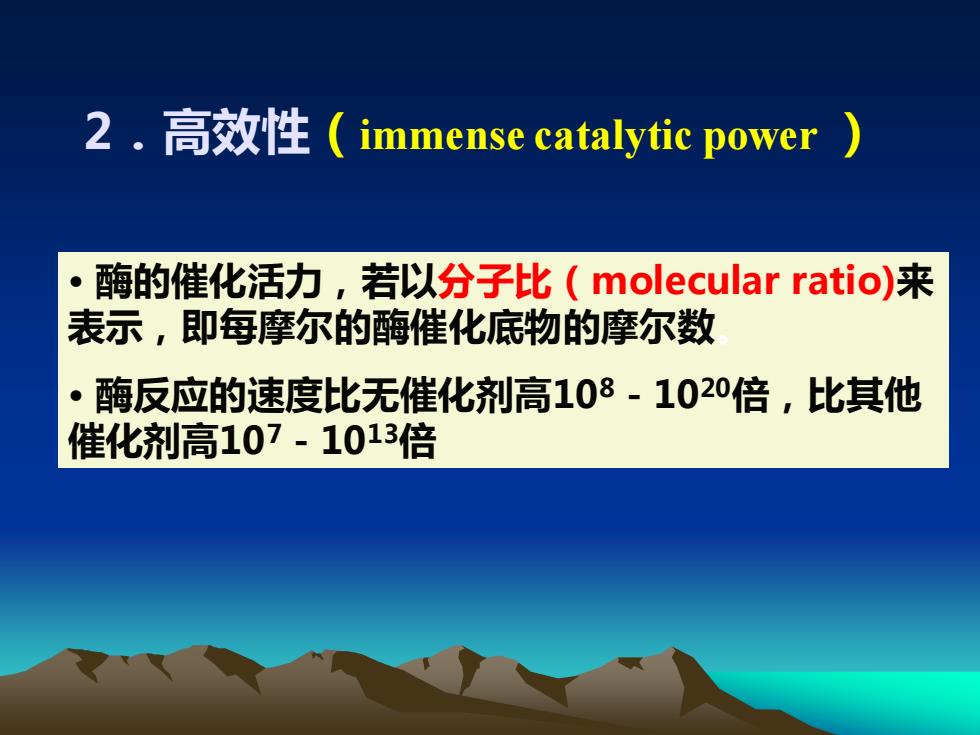
The Nobel Prize in Chemistry 1949 "for his discovery "for their preparation of enzymes and vi that 公d" proteins in a pure form" ames Batcheller .Tohn Howond AVendell Meredith Sumner Northrop Stanley 1/2 of the prize 1/4 of the prize 1/4 of the prize Cornell University Rockefeller Institute for Rockefeller Institute for Ithaca,NY,USA Medical Research Medical Research Princeten,NJ,USA rinceton,NJ,USA 1887-1955 1897-1987 19041971
The Nobel Prize in Chemistry 1949 James Batcheller Sumner Wendell Meredith Stanley 1887-1955 Cornell University Ithaca, NY, USA Rockefeller Institute for Medical Research Princeton, NJ, USA John Howard Northrop 1897-1987 Rockefeller Institute for Medical Research Princeton, NJ, USA "for their preparation of enzymes and virus proteins in a pure form" "for his discovery that enzymes can be crystallized" 1/2 of the prize 1/4 of the prize 1/4 of the prize 1904-1971

什么是酶 酶是活细胞产生的一类具有催化功能的生物分子, 所以又称为生物催化剂Biocatalysts。 。 绝大多数的酶都是蛋白质。 酶催化的生物化学反应,称为酶促反应Enzymatic reaction。 在酶的催化下发生化学变化的物质,称为底物 substrate.。 Enzymes are the reaction catalysts of biological systems
什么是酶 • 酶是活细胞产生的一类具有催化功能的生物分子, 所以又称为生物催化剂Biocatalysts 。 • 绝大多数的酶都是蛋白质。 • 酶催化的生物化学反应,称为酶促反应Enzymatic reaction。 • 在酶的催化下发生化学变化的物质,称为底物 substrate。 Enzymes are the reaction catalysts of biological systems

般性特点 1、加快反应速率: 2、不改变平衡常数; 3、自身不发生变化· Enzymes,like all other catalysts,does not affect reaction equilibria,only accelerate reactions
一般性特点 1、加快反应速率; 2、不改变平衡常数; 3、自身不发生变化; Enzymes, like all other catalysts, does not affect reaction equilibria, only accelerate reactions

生物催化剂特点 1.反应条件温和,酶易失活 ·酶促反应一般在pH5-8水溶液中进行,反应温 度范围为20-40℃ 高温或其它苛刻的物理或化学条件,将引起酶 的失活(不稳定性)
• 酶促反应一般在pH5-8水溶液中进行,反应温 度范围为20-40C • 高温或其它苛刻的物理或化学条件,将引起酶 的失活(不稳定性) 生物催化剂特点 1.反应条件温和,酶易失活

2.高效性(immense catalytic power) 酶的催化活力,若以分子比(molecular ratio)来 表示,即每摩尔的酶催化底物的摩尔数 ·酶反应的速度比无催化剂高108-1020倍,比其他 催化剂高107-1013倍
2.高效性(immense catalytic power ) • 酶的催化活力,若以分子比(molecular ratio)来 表示,即每摩尔的酶催化底物的摩尔数。 • 酶反应的速度比无催化剂高108-1020倍,比其他 催化剂高107-1013倍